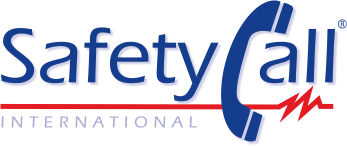Rick Kingston, President, Regulatory and Scientific Affairs
If you’re wondering exactly what constitutes an adverse event (AE), you’ve come to the right place. In general terms, an adverse event is an experience associated with the use of a product that is or could be considered adverse or unwanted. They typically fall into three categories:
- Toxicology-related adverse events – When humans or their pets experience adverse health consequences believed to be associated with the use of a product.
- Mechanical failure adverse events – When a product does not perform to specification resulting in damage to the product or other systems that rely on the product, leading to monetary loss, or in some cases, potential for adverse health consequences for humans or animals.
- Unintended but expected adverse events – When a product has side effects that do not rise to the level of unacceptable in terms of severity or frequency, and the risks are outweighed by the expected benefits associated with product use (such as diphenhydramine, i.e. Benadryl, for allergy symptoms with the expected side effect of drowsiness).
Knowing how a product behaves helps manufacturers determine when to add cautionary labeling or other safety controls, ultimately avoiding “failure to warn” liabilities.
Manufacturing Adverse Event Monitoring
SafetyCall provides adverse event monitoring that helps manufacturers establish systems and processes for documenting and monitoring all potential adverse events, ensuring their products provide the best results for intended use, without unintended consequences. This type of best practice monitoring also uncovers opportunities for making adjustments to the design, formulation, labeling, or directions for use that can make the product more desirable to the customer or consumer.
Post-Market Surveillance
Once the product is in the hands of consumers, post-market surveillance helps to ensure the product continues to perform as expected. In our specific area of post-market surveillance at SafetyCall, we help monitor the safety of manufacturers’ products by receiving, documenting and managing all reports of adverse events. We carefully evaluate them for trends and patterns, helping manufacturers determine when it may become necessary to take action to protect their customers and brands.
Varying Degrees of Risk
This brings us to an important piece of information germane to all AE monitoring, whether it’s a manufacturer’s internal product stewardship system, or an external monitoring system designed to meet the most stringent pharmacovigilance standards. Not all AEs are created equal. The best and most robust AE monitoring and surveillance systems capture not only adverse events directly associated with use of a product, but adverse events suspected to be associated with product use. We sometimes refer to this as background noise – events that occur concurrently and coincidentally during product use that have nothing to do with the product. It’s important to monitor these types of events as well, since sometimes they represent an emerging threat.
This process, which detects problems by examining all events suspected to be associated with product use, is collectively referred to as signal detection. No manufacturer wants to miss an early signal by dismissing an adverse event as being background noise only to find out there was actually something wrong with the product and they missed an opportunity to quickly correct it.
At SafetyCall, we specialize in identifying those adverse events that may signal an emerging issue, and then work with the manufacturer to determine if there is a need to take action. Our safety experts and scientists use a combination of science, safety best practices, and toxicology skills to sort through data to identify whether the adverse event is background noise, or something more serious.
For more information about adverse events or questions regarding adverse event reporting, visit our website or contact SafetyCall.


